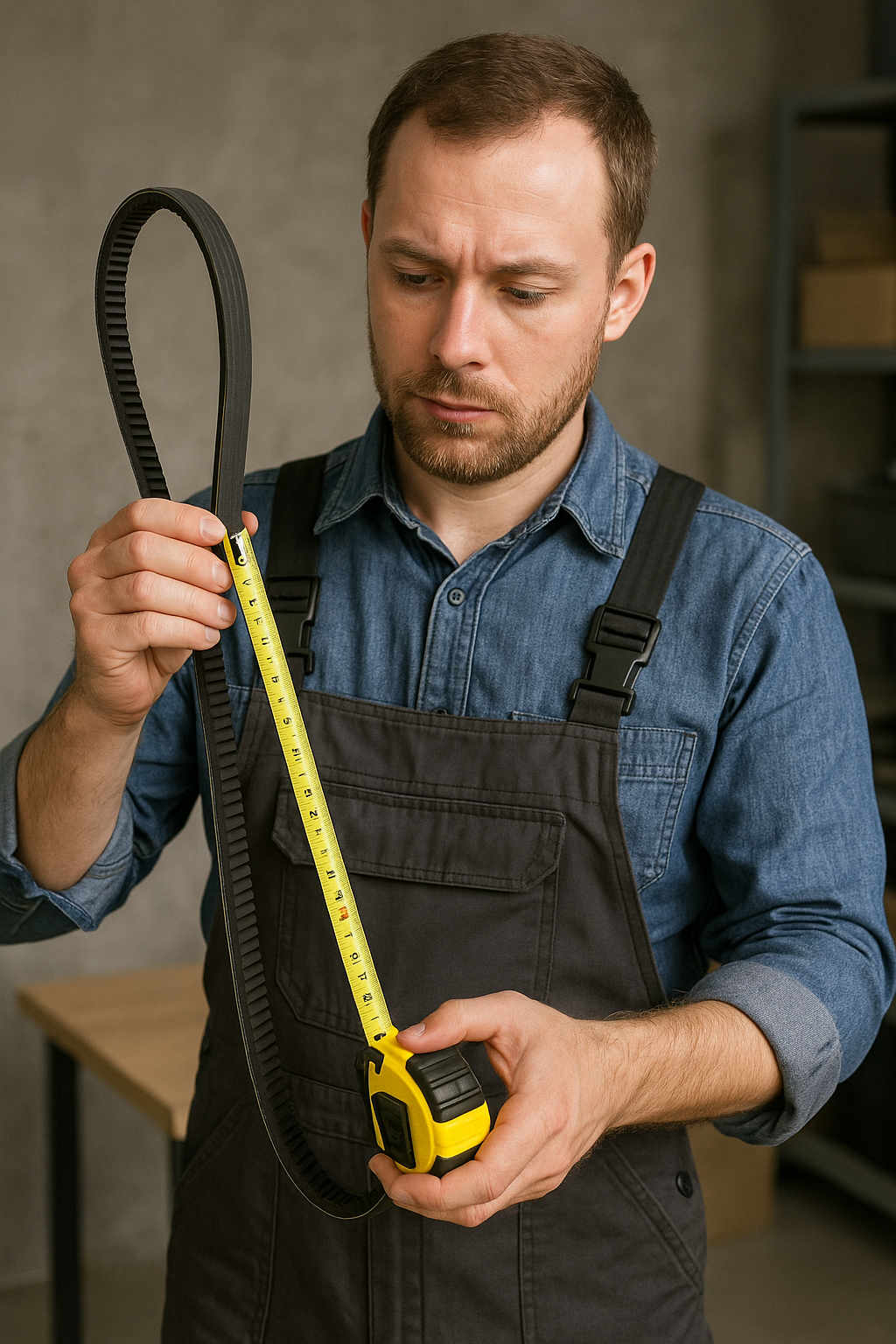
Ultimate Guide to Measuring Your V‑Belt for Replacement
Share
In this guide, you’ll learn exactly how to measure your V‑belt length, width, and section—whether it’s installed or removed—so you can confidently find the perfect replacement.
Accurate belt measurements are the first step toward ensuring optimal performance, preventing costly downtime, and extending the life of your equipment. In this guide, you’ll learn exactly how to measure your V‑belt length, width, and section—whether it’s installed or removed—so you can confidently find the perfect replacement.
Why Accurate V‑Belt Measurement Matters
Proper Fit: A belt that’s too long will slip; one that’s too short will overstress bearings.
Longevity: Correct tension and fit reduce wear and heat buildup.
Performance: Ensures efficient power transfer and minimizes noise.
Understanding Belt Types & Dimensions
| Belt Type | Section Code | Typical Cross‑Section (W × H) | Application |
| Classical V (“A, B”) | A, B | 1/2″ × 5/16″ (A) 21/32″ × 13/32″ (B) | Light‑duty drives |
| Narrow V (“SPZ, SPB”) | SPZ, SPB | 3/8″ × 5/16″ (SPZ) 5/8″ × 5/16″ (SPB) | Compact drives, HVAC |
| Wedge (“3V, 5V, 8V”) | 3V, 5V, 8V | 3/8″ × 5/16″ (3V) 21/32″ × 13/32″ (5V) | Higher horsepower in limited space |
| Cogged / Trapezoidal | Various | Varies | Flexible bending, high‑flex drives |
| Serpentine | K, PK, 6PK | Multi‑rib profile | Automotive, industrial multi‑pulley |
Note: “Section code” corresponds to the belt’s standardized cross‑section dimensions. Always verify these against manufacturer specs.
Tools You’ll Need
Flexible tape measure or tailor’s measuring tape
Zip‑tie or a length of string (for on‑machine belts)
Calipers (optional, for precise width/thickness)
Marker or chalk (to mark start/end when using string)
Step‑by‑Step Measurement Process
1. Identify Your Belt Type
Look for any stamped code on the belt (e.g., “5V1900,” “B62,” “SPZ1120”).
Compare against our Belt Section Chart to confirm section dimensions.
2. Remove or Loop for Measurement
Off‑machine: Lay the belt flat on a table.
On‑machine: Thread a zip tie or string through the belt, cinch snugly, then remove.
3. Measure Outside Circumference (O.C.)
- Position tape measure around the outside of the belt (or lay string flat and measure its length once removed).
- Record to the nearest 1/16″ (or 1 mm).
Tip: If using string, mark the overlap point with chalk before straightening and measuring.
4. Measure Belt Width & Height
- Use calipers or tape measure across the top width of the belt’s cross section.
- Measure the thickness (height) from the belt’s backing to the bottom of the V.
5. Convert to Standard Belt Code
Length Conversion: O.C. in inches ÷ 1.0 → direct belt code (e.g., 1900 mm → “1900”) O.C. in inches × 25.4 → length in millimeters for metric codes
O.C. in inches ÷ 1.0 → direct belt code (e.g., 1900 mm → “1900”)
O.C. in inches × 25.4 → length in millimeters for metric codes
Section Confirmation: Match your width/thickness to section chart codes.
Example:
You measured an O.C. of 62 in, width of 21/32 in, and height of 13/32 in.
Section dimensions match a B62 belt.
Common Measurement Pitfalls & Tips
Wear & Stretch: Old belts stretch—measure multiple times or use string method for accuracy.
Temperature Effects: Measure at room temperature; heat can expand the belt slightly.
Tape Slack: Keep the tape or string taut but not overly tight—mimic proper tension.
Quick Reference: V‑Belt Section Codes
| Section Code | Width (in) | Height (in) | Typical O.C. Range (in) |
| A | 1/2 | 5/16 | 20 – 125 |
| B | 21/32 | 13/32 | 32 – 245 |
| 3V | 3/8 | 5/16 | 30 – 90 |
| 5V | 21/32 | 13/32 | 75 – 265 |
| SPZ | 3/8 | 5/16 | 40 – 315 |

